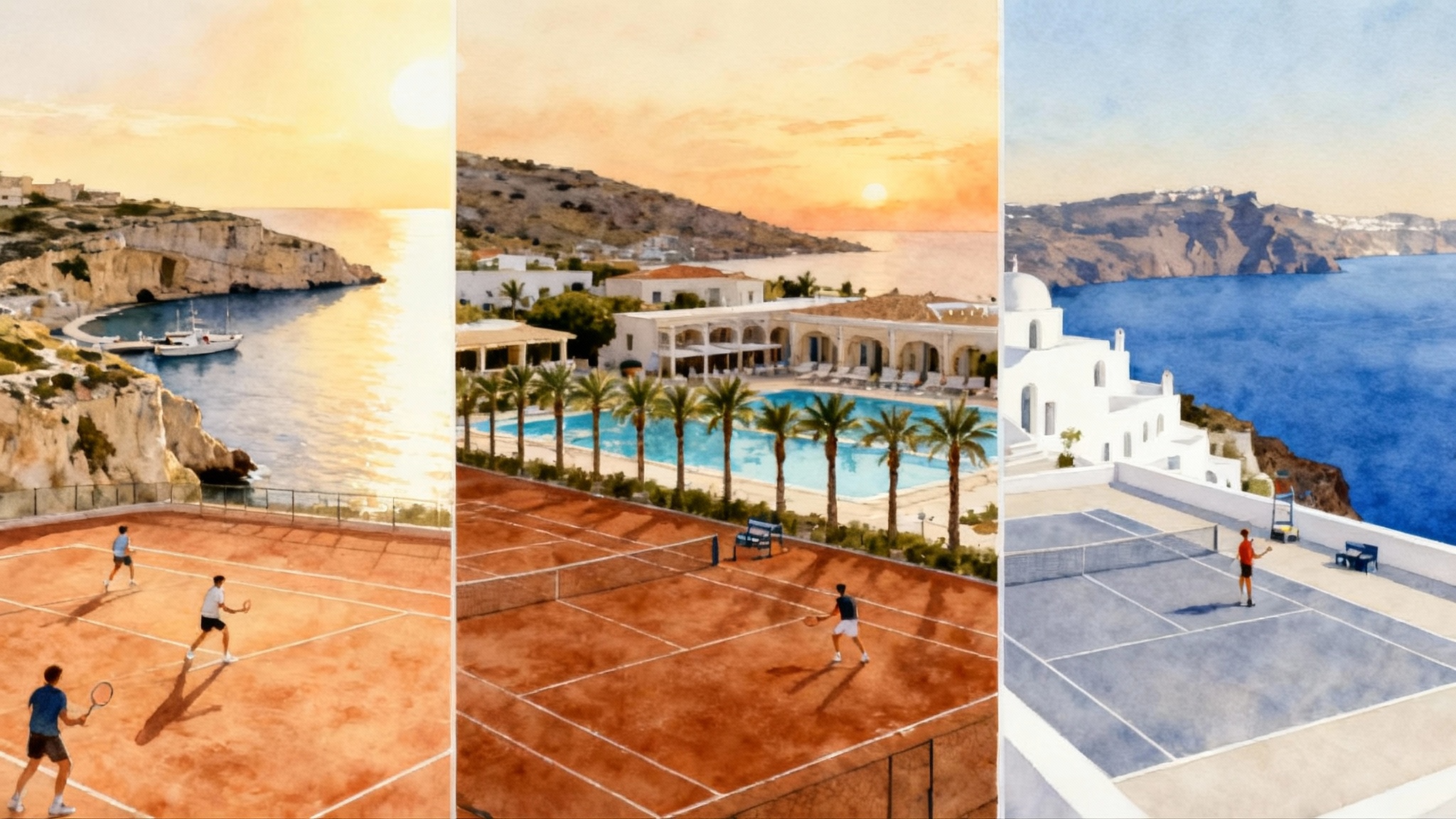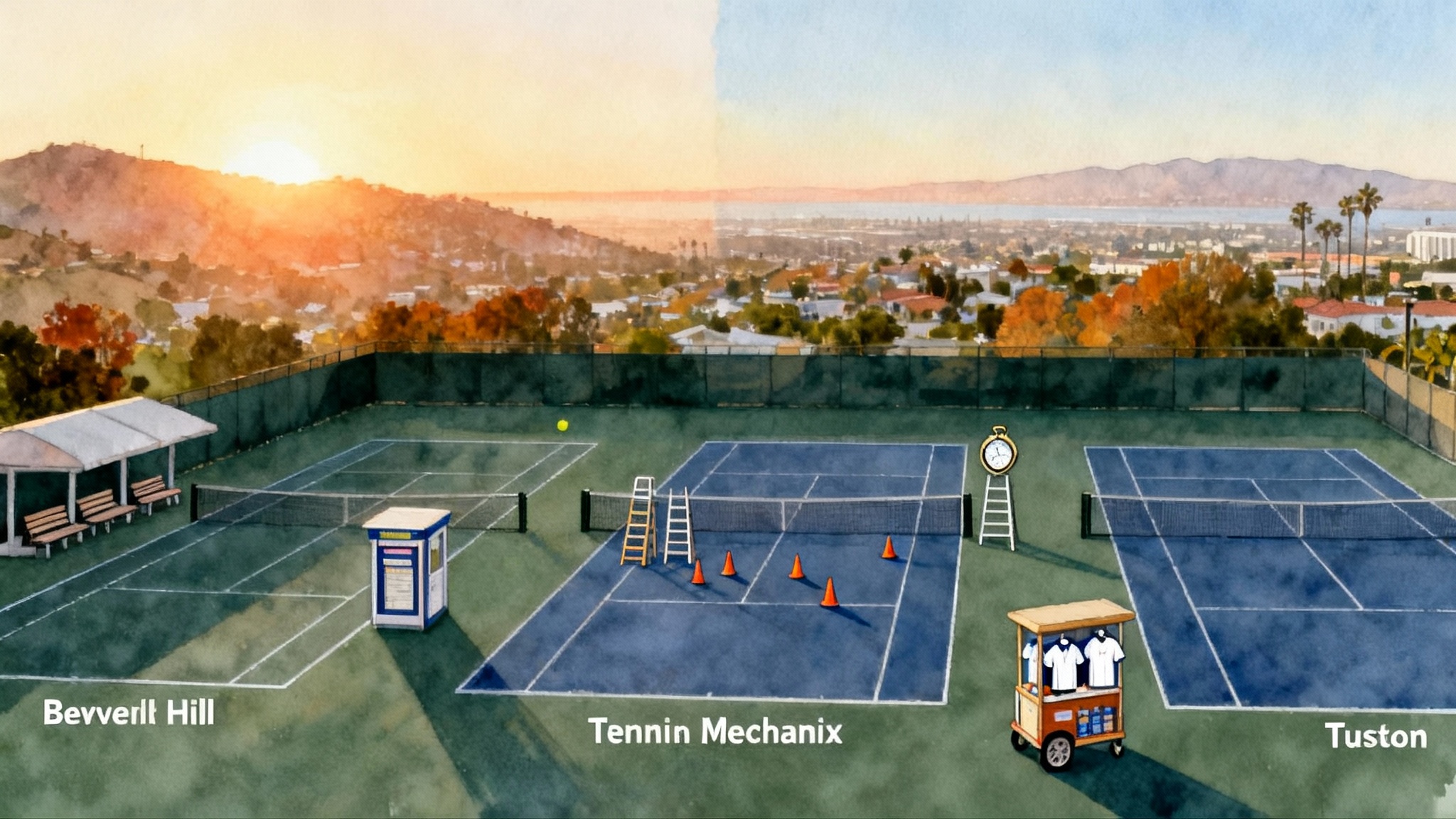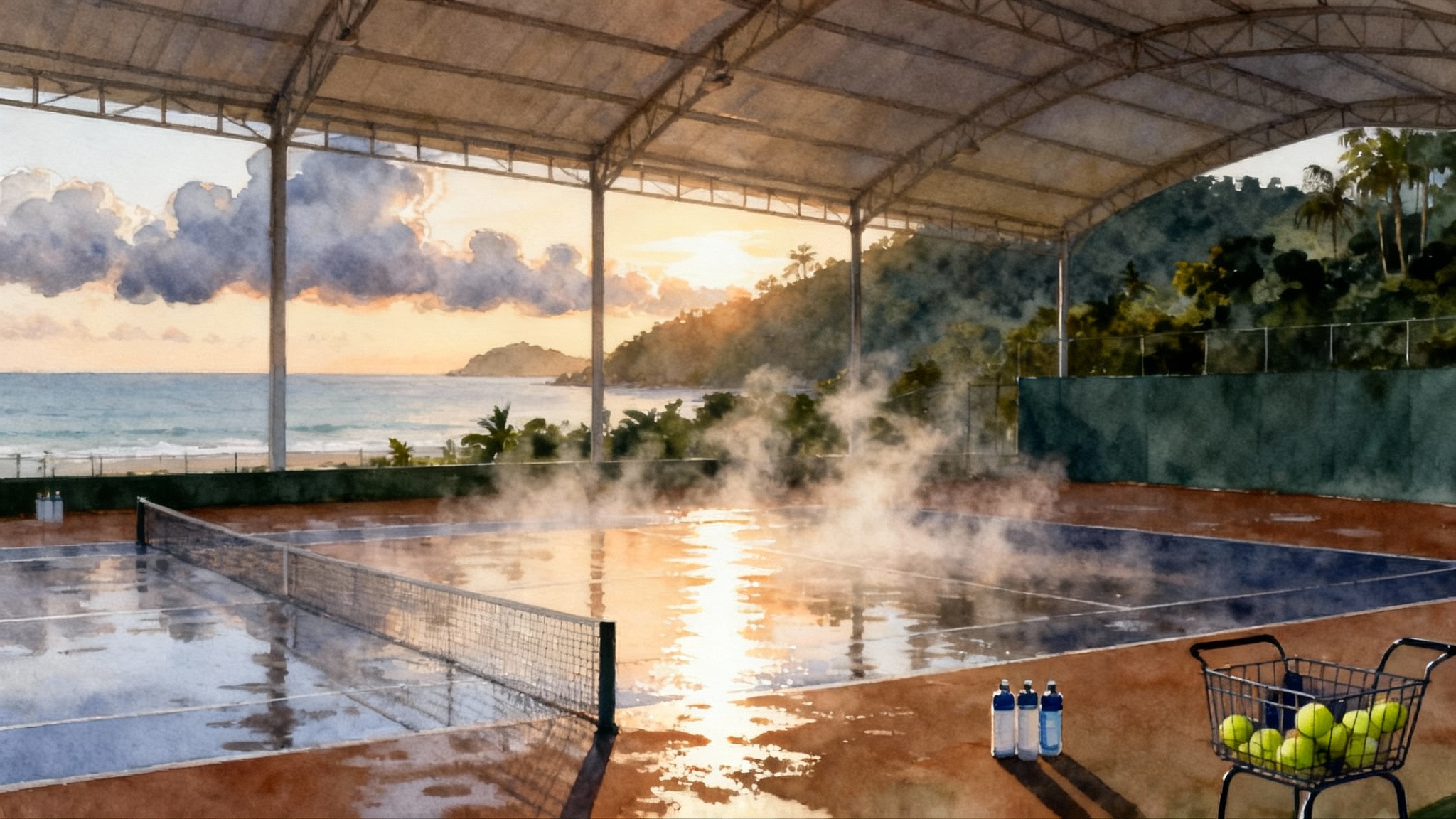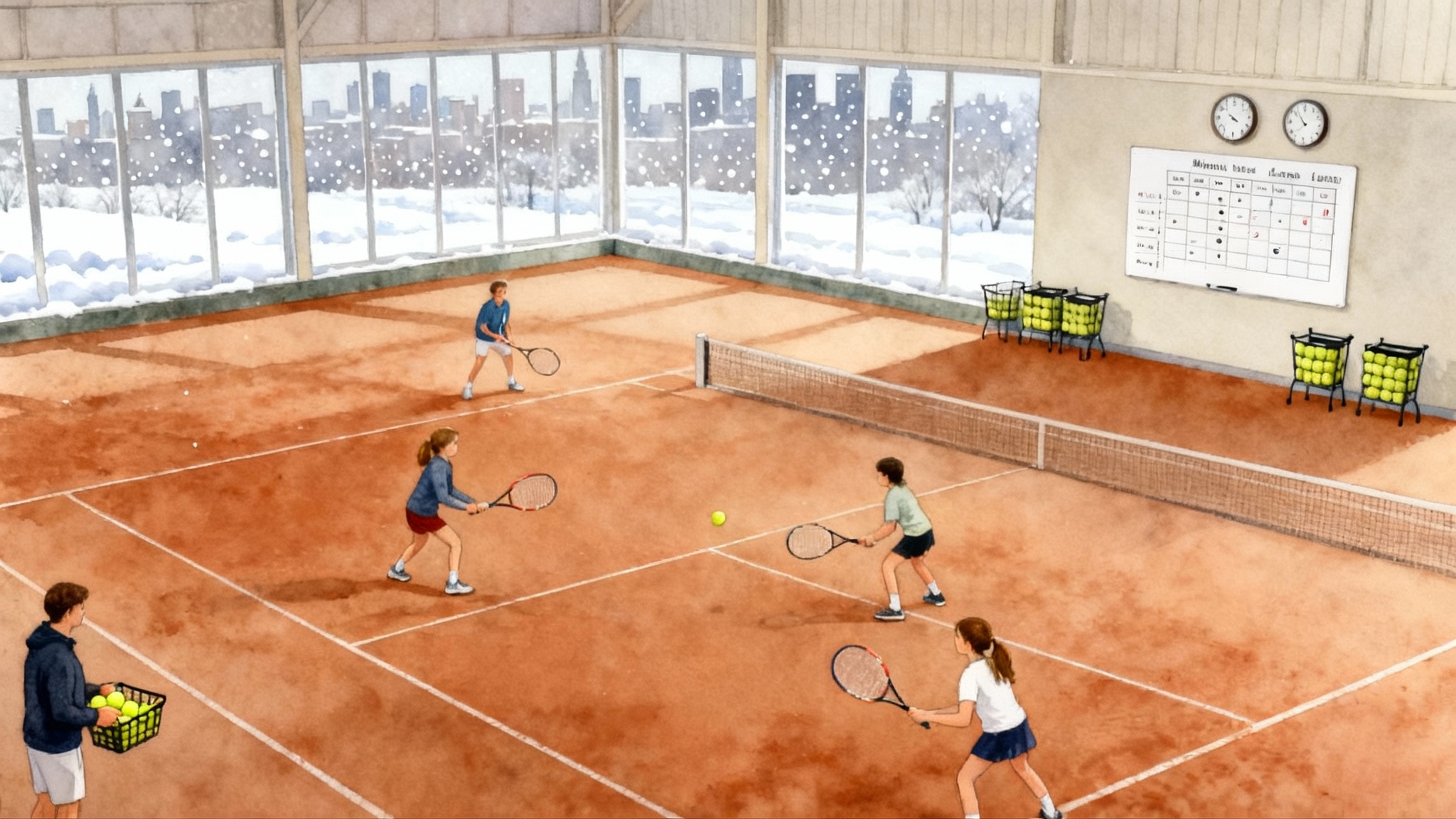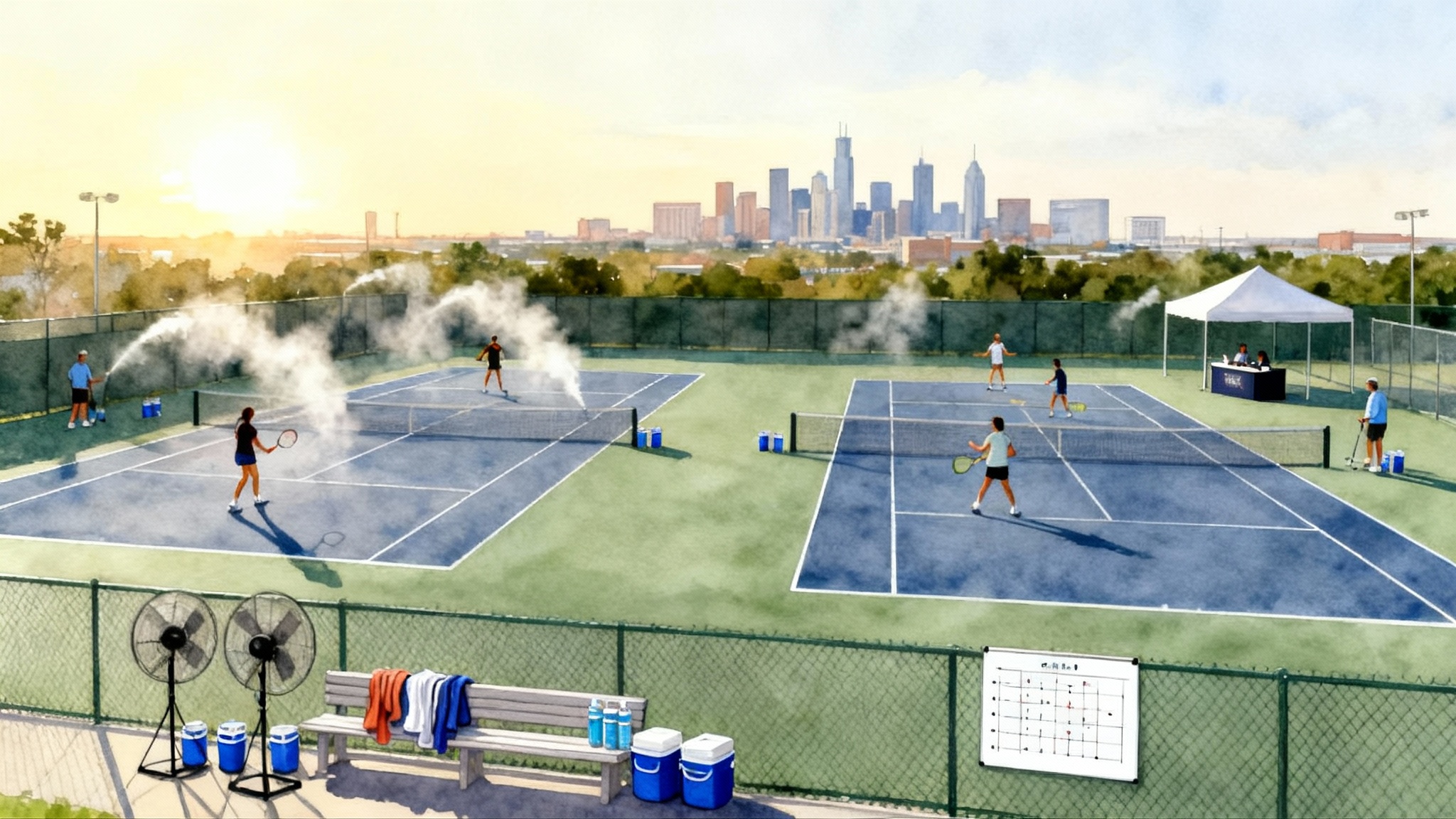Best Bay Area Tennis Academies 2025–2026: Parent Guide
A practical, up-to-date guide for families comparing Bay Area junior tennis programs from San Francisco to San Jose. We explain coaching credentials, Universal Tennis Rating development, training loads, surfaces and indoor access, pricing, commute, trials, and college placement.
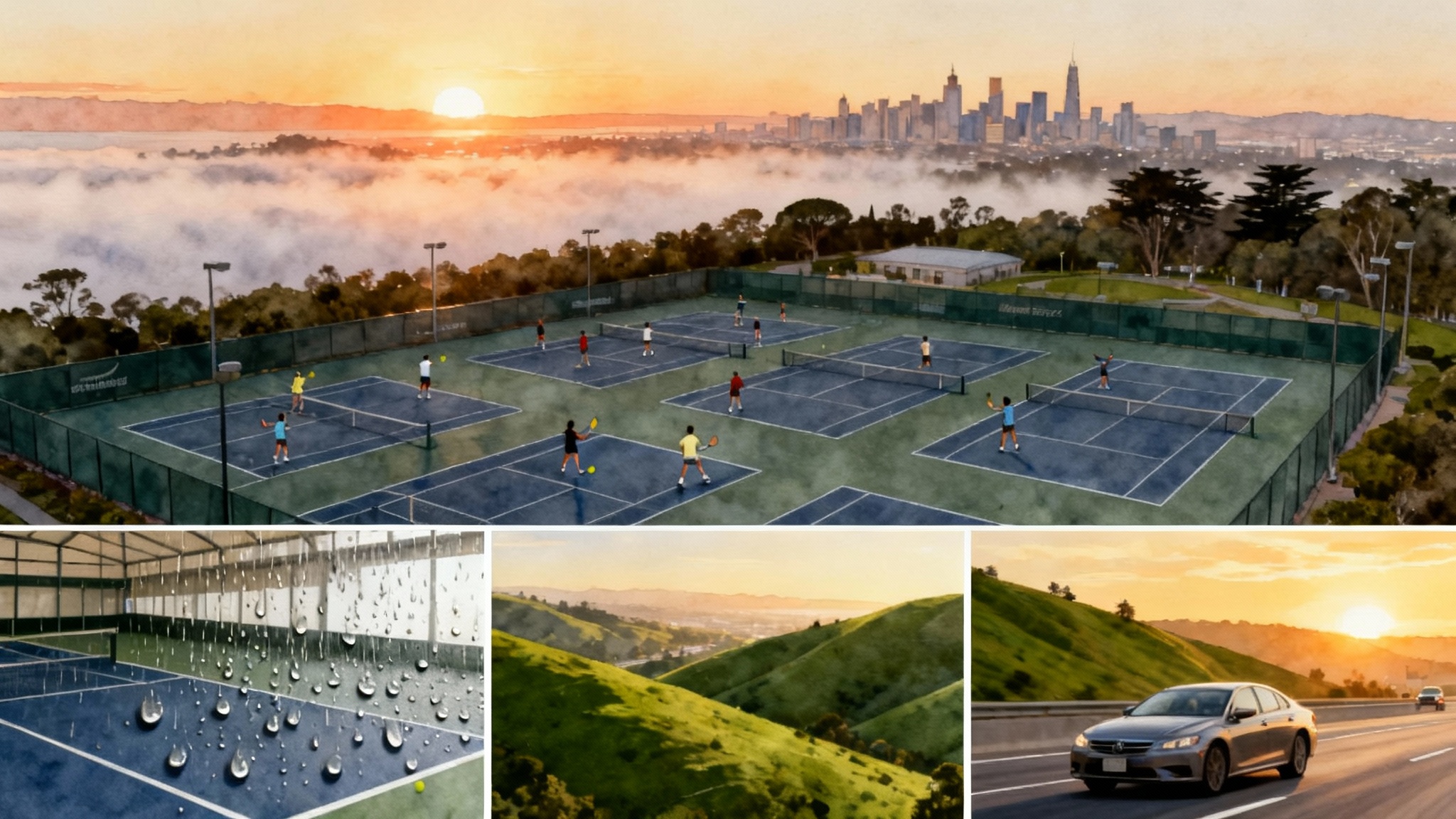
How to use this guide
If you are a parent or a motivated junior choosing a training home for 2025–2026, the Bay Area offers depth and variety. That is both the opportunity and the challenge. This guide gives you a clear framework and concrete checklists, then profiles two programs families ask about most right now. We also share curated shortlists for San Francisco, the East Bay, and the Peninsula and South Bay. If you are also weighing Southern California, compare with our overview in LA vs Orange County academies.
Think of the choice like selecting a school and a daily commute rolled into one. Coaching quality is the curriculum, training load is the homework, your player’s Universal Tennis Rating is the report card, and your family calendar is the bus schedule. When those four align, progress compounds.
What matters most for junior development
Use these eight factors and the italicized questions during tours or trial sessions.
- Coaching credentials and continuity
- What to ask: Who runs the court, and who actually feeds the balls? How long have the lead coaches been with the program? Who reviews match videos and adjusts plans?
- Why it matters: Juniors progress fastest when the person designing the plan is on court often enough to see the messy middle, not only the photo days.
- Universal Tennis Rating development
- What to ask: How will the academy build level-based play and match reps? Do they track rating reliability and discuss goals with parents?
- Why it matters: Universal Tennis Rating, on a 1.00 to 16.50 scale, becomes reliable after about five matches and responds to opponent strength and games won. Read the official overview in How Universal Tennis Ratings work.
- Training load and periodization
- What to ask: How many live ball hours, fed ball reps, point play blocks, and fitness sessions per week in season and off season? What is the rest plan before tournaments?
- Why it matters: Over the long term, the best programs treat energy like a budget. They schedule heavy weeks and light weeks so school tests and tournament peaks fit together.
- Surfaces and rainy-season options
- What to ask: Where do you train when it rains from November through March? Do they have covered or indoor options, and how often can your player access them?
- Why it matters: The Bay Area is mostly hard court, so indoor time is scarce and valuable during storms.
- Price tiers and value
- What to ask: What are the tiers for development, high performance, and elite groups? What is included beyond court time, such as fitness, video, and college advisory?
- Why it matters: Compare value per hour of coached training, not just monthly totals. Ask for a sample week for a player like yours.
- Commute and schedule friction
- What to ask: What start times avoid the worst of 101, 280, 85, and 680? Can you stack back-to-back sessions to reduce trips? Is there homework space on site?
- Why it matters: A program is only as good as the sessions you actually attend with focus and fuel.
- Trial or assessment placement
- What to ask: Can my player do an assessment class before full enrollment? How do you decide group placement and when do you re-evaluate?
- Why it matters: Getting the band right matters. A group that plays one level above is a growth engine. Two levels above is discouraging.
- College placement transparency
- What to ask: Do you publish recent commitments and connect families willing to discuss their recruiting process? How do you coordinate with high school coaches?
- Why it matters: A strong track record is useful, but make sure the support fits your player’s academic and athletic goals.
Fresh profile: Florin Marica Tennis Academy, Saratoga
Learn more in our academy profile: Florin Marica Tennis Academy.
What stands out
- Structure and focus: Founded in 2010, this program has a structured clinic ladder from Red and Orange Ball through Green and full Yellow Ball, with after-school and weekend training blocks. Group classes during the school year run at the Saratoga High School courts, which keeps logistics simple for West Valley families from Saratoga, Cupertino, Los Gatos, and West San Jose.
- Coaching presence: Led by coach Florin Marica, a long-time figure in Saratoga tennis who has also served as a high school head coach, which helps align academy training with school-season demands. Families praise the on-court discipline and clear match plans.
- Training load: Typical weekly pathways include two to five clinic days with optional private lessons to target patterns like serve plus one or first-strike return games. Ask for the monthly plan that layers clinic hours with match play weekends.
- UTR development: Expect level-based hitting ladders and point play blocks. Parents should ask for a 90‑day plan that pairs two league or tournament matches most weekends, since the rating responds most to frequent competitive play and the quality of opponents.
- Surfaces and rainy-season plan: Courts are hard surface. In winter, ask about covered backup options or how the academy clusters sessions on dry windows to keep rhythm.
- Price tiers: The program publishes clear tiered pricing for drop-ins and monthly class packages. This makes it easier to compare value by hours coached per week rather than headline numbers.
Who thrives here
Families who value clear progression, consistent court leadership, and a school‑compatible schedule. If your player is pushing from school varsity toward sectional competitiveness, this structure helps.
Due diligence tip
During a trial, count transitions. You want minimal idle time between drills and fast feeds during live ball patterns. Ask the coach to show you how today’s clinic block maps to the next tournament weekend.
Fresh profile: Santa Cruz High-Performance Tennis Academy
See our full write-up: Santa Cruz High-Performance Tennis Academy.
What stands out
- Coaching leadership and venues: Directed by Brice Chevalier, a United States Professional Tennis Association certified coach and personal trainer, the academy blends modern stroke work with on-court fitness. Junior clinics and private lessons run at Cabrillo College in Aptos and at the Chaminade Resort courts in Santa Cruz, giving coastal families flexible access.
- Training load: Expect a mix of video analysis, live ball drilling, and point construction. For players chasing high school lineup spots, the staff can help periodize around school seasons and coastal weather.
- UTR development: The program supports juniors who want to compete in United States Tennis Association Northern California events and build reliable ratings. Ask how they schedule level-based match play to keep most matches inside a one-point UTR window.
- Younger pathway: Ten and Under play uses Red, Orange, and Green balls so that kids learn full swings and spacing on appropriately sized courts, preserving technique when they graduate to yellow ball.
Who thrives here
Multi‑sport or beach‑town families who want a single staff that can handle both technical work and strength conditioning on court.
Due diligence tip
Because the coast gets more rain and fog, ask for a rainy‑day rotation that substitutes indoor fitness and video review so progress does not stall in winter.
San Francisco shortlist
These programs represent a range of high‑quality options inside the city. Call ahead about group criteria and space.
- Eagle Fustar at Lisa and Douglas Goldman Tennis Center, Golden Gate Park: A performance pathway with clear UTR criteria and a full‑time training option. The facility earned the 2023 United States Tennis Association Featured Facility of the Year after a major renovation, and it is a strong tournament and training hub for city players. See the USTA Featured Facility recognition.
- Lifetime Activities youth pathway at Goldman Tennis Center: A broad ladder from red ball to match play that can feed into performance groups when ready. The pro shop and long daily hours make planning easier.
- California Tennis Club junior program: Private club with clinics and a high‑performance track for members. Ask about guest options and trial assessments.
- Cal Tennis Academy: City-based junior clinics and camps at public sites like Alice Marble. Good fit for early development and match‑readiness for local leagues.
Note on indoor access
The city is almost entirely outdoor. Families who need rainy‑season continuity should ask about Peninsula indoor time on tournament weeks.
East Bay shortlist
- Tompkins Tennis at Bay‑O‑Vista and ClubSport San Ramon: High‑tempo sessions, trial class placement, and a clear ranked‑junior pathway. Good for players who need intensity and a defined culture.
- Walnut Creek Tennis Center by Lifetime Activities: Large public center with youth leagues and camps that build match experience. Useful bridge from lessons to competition.
- Berkeley Tennis Club juniors: Member program with year‑round clinics and private coaching in a tradition‑rich setting. Ask about non‑member access and wait lists.
Tip for the East Bay
Traffic on 680 and 24 spikes after 3 p.m. If your player attends school in the Lamorinda corridor or the Tri‑Valley, prioritize start times at 4 p.m. or after 6 p.m. to avoid the peak.
Peninsula and South Bay shortlist
- Broadway Tennis Center, Burlingame, operated by The Bay Club: Six indoor hard courts under championship lighting. This is one of the rare indoor options on the Peninsula, which is valuable in winter. Confirm member access and guest policies.
- Player Capital Tennis, Atherton: A well‑known Peninsula academy with summer tournament training programs and year‑round junior pathways at Holbrook‑Palmer Park. Good for Atherton, Menlo Park, and Redwood City families.
- Eagle Fustar Tennis, Sunnyvale and satellite sites: A tiered performance ladder, including Elite for higher UTRs and a full‑time track. Expect college placement advising and fitness add‑ons.
- Silicon Valley Tennis Academy, Mountain View and Santa Clara: Year‑round junior ladder from Rising Stars to High Performance, plus trial or placement guidance. Ask about rainy‑season contingency.
- Florin Marica Tennis Academy, Saratoga: Profiled above. Convenient for Cupertino, Saratoga, and Los Gatos.
- Soltoianu Tennis School, Sunnyvale area: A newer high‑performance option founded by former tour players. Schedule a trial to understand group intensity and fit.
Commute tip for the Peninsula and South Bay
If you split time between a school on 280 and training on 101, choose start times that avoid the cross‑corridor crunch between 4 p.m. and 6 p.m. Keep a court bag in the car with grips, electrolyte drink, and a simple pre‑session snack so late arrivals do not become low‑energy sessions.
A simple 90‑day plan to test fit
Weeks 1–2: Assess and baseline
- Do one trial or placement session at your top two programs. Ask for a written training week, with drills by theme. Baseline your player’s UTR reliability and a short skills checklist: serve targets, rally tolerance to 10 balls crosscourt on the forehand and backhand, plus 10 first‑volley finishes.
Weeks 3–6: Build the routine
- Commit to two to four clinics per week with one private lesson every 10 to 14 days to fix the biggest bottleneck. Schedule verified match play every weekend, even if that means short set formats. Use one practice set on Friday to dial serves and patterns.
Weeks 7–10: Test under pressure
- Play two tournaments or travel team weekends. Ask coaches to set goals that are measurable: first‑serve percentage above 60, reduce unforced errors in the first four shots, and convert 50 percent of short balls.
Weeks 11–12: Review and decide
- Meet with the lead coach and your player. Review UTR change, match notes, and school impact. If both development and family logistics feel sustainable, commit for the season.
How to evaluate college placement without guesswork
- Separate outcomes from process: A list of alumni at big‑name programs is a start, but ask the staff to walk you through the process they followed with two recent players who look like your child in academics, rating band, and physical profile.
- Ask for recruiting timelines: When did they begin video capture, academic advising, and coach outreach? Who reviews emails to coaches? Who guides tournament selection for exposure without burnout?
- Verify match ecology: College‑bound players need frequent matches against a slightly stronger band. Ask for a proposed tournament calendar that shows how your player will see those opponents without constant travel.
A quick guide to price tiers
Rather than chasing a single number, compare value by hours of coached training and by the ratio of live ball to fed ball and fitness. As a rule of thumb for 2025:
- Development tier: Best for new competitors. Fewer hours per week, emphasis on skill blocks and rally tolerance.
- Performance tier: Three to five group sessions per week with structured point play, fitness blocks, and match plans.
- Elite or full‑time tier: School‑compatible or homeschool‑compatible schedules that layer daily training with strength, video, and regular travel competition.
Ask programs to price a specific 12‑week plan for your player and to separate tuition from add‑ons like tournament coaching and travel days. Transparency is the real discount.
Rainy season and indoor access, explained
From late fall through early spring, the Bay Area’s outdoor courts are often wet. That is why indoor options like Burlingame’s Broadway Tennis Center on the Peninsula make a difference in January and February. In San Francisco, the renovated Lisa and Douglas Goldman Tennis Center is a year‑round outdoor hub with lights, tournament hosting, and strong junior throughput after earning the 2023 United States Tennis Association Featured Facility of the Year. Families can build reliable winter rhythms there, then add Peninsula indoor days when storms hit. See the USTA Featured Facility recognition.
Ten on‑site questions that separate great from good
- Who runs this specific group most days, and how often is the director on court?
- What is the player‑to‑coach ratio during live ball?
- How many minutes of point play did this clinic include today? Show me the plan.
- How do you place new players by level, and how quickly do you move someone up or down?
- What does a rest week look like before a two‑tournament block?
- How will you build my player’s Universal Tennis Rating reliability over the next 60 days?
- What are your rainy‑day substitutions so we do not lose rhythm?
- How many minutes of fitness are age‑appropriate for this group, and who supervises it?
- If college is a goal, who owns the recruiting checklist and weekly touch points?
- Can we see a sample 12‑week plan and invoice for a player like ours?
Final take
In a region full of talent and traffic, the best academy is the one your player can reach consistently, that keeps most matches close and frequent, and that pairs technical clarity with smart scheduling. Start with two trials, track progress for 90 days, then commit. Momentum beats perfection when school, sport, and life have to fit the same calendar.
